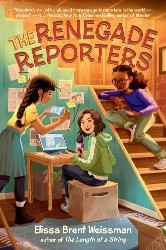Imani, adopted as an infant, is about to become a bat mitzvah. As she thinks about what this rite of passage means to her, Imani also wonders about her birth parents and who they are. She has been raised by a warm, supportive, and loving Jewish family, surrounded by parents and a brother who adore her, an extended family she cherishes, an active circle of friends, and teachers who would be the envy of many. But as a young, black, soon-to-be-woman in a sea of mostly white faces, she can’t help wondering about her birth parents.
Imani’s Hebrew school class, as part of preparation for the bar/bat mitzvah year, plunges into a special project that involves genealogy and exploration of family roots. During this same period of time, Imani’s beloved grandmother, Anna, dies and the diary she wrote as a child is discovered in her apartment, tucked away on a crowded bookshelf. Anna has promised the books to Imani and now the diary belongs to her, as well.
As she prepares for her bat mitzvah, Imani follows Anna’s story through the pages of her diary. Anna, born in Luxembourg, was sent to the United States as a child, right before the Holocaust. Her parents and siblings, including an identical twin sister, had hopes of following as soon as possible, but the timing was not in their favor; they perished in a concentration camp. Reading her grandmother’s story, Imani thinks about searching for her biological family’s roots, and the impact that might have on her adoptive family and her future.
This is a year of tremendous growth for Imani, as a pre-bat mitzvah year should be; the reader watches as she deepens her understanding of who she is and of the world around her — page by page, emotion by emotion. The narrative flips back and forth between Anna’s voice and Imani’s, resulting in a textured experience for the reader. The string mentioned in the book title refers to a unit of measurement, but also suggests connections between past and present, across an ocean, and onward into the future.
This is an excellent book for middle grade readers and above who are interested in learning about the Holocaust but are not yet prepared to plunge too deeply into the horrors of the period. It presents the history of a terrible time but includes positive elements and hopeful moments.
Michal Hoschander Malen is the editor of Jewish Book Council’s young adult and children’s book reviews. A former librarian, she has lectured on topics relating to literacy, run book clubs, and loves to read aloud to her grandchildren.



